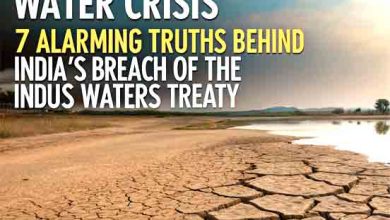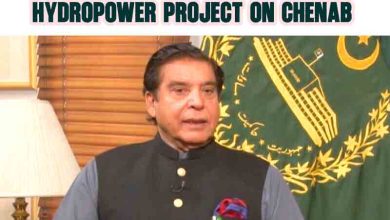Despite floods, up to 20pc water shortage forecast for Rabi
ISLAMABAD: Despite floods and torrential rainfall that wreaked havoc across the country and inundated swathes of lands, particularly in Sindh and Balochistan, the country will face a water shortage of 15 to 20 per cent in the upcoming Rabi cropping season.
The anticipated water shortage for the Rabi season, beginning October 1, is expected to dent mainly the wheat crop.
A meeting of the the Indus River System Authority’s (Irsa) technical committee, presided by Director Regulations Khalid Idrees Rana, estimated the total water availability for the cropping season at 30.5-33.5 million acre feet (MAF), including 21-24MAF of river flows reaching rim stations and about 9.5MAF in water reservoirs. Meanwhile, the water requirement for Rabi crops is about 37-38MAF.

The technical committee meeting, which was also attended by representatives of the provinces, Water and Power Development Authority (Wapda) and Met Office, noted that Tarbela Dam was filled to capacity, while storage in Mangla Dam was almost 50pc of its conservation level.
Irsa estimates 4-7MAF more requirement than availability; Sindh, Punjab dispute loss calculations
Based on these estimates, the committee kept the overall water shortage for the season between 15pc and 20pc range.
However, the committee couldn’t make a final call about water availability as Punjab and Sindh disagreed with the calculation of water losses.
As per the estimates, conveyance losses — water lost due to absorption or evaporation — for Jhelum-Chenab region were estimated at zero, and that for the Indus region at 8pc by Sindh and zero per cent by Punjab.
Punjab’s representatives viewed that historically losses in a flood year always remained negligible given the water absorption. On the contrary, Sindh’s opinion was that since most of the heavy rainfalls were in streams and nullahs and not within the river’s reaches, it was not a usual flood year. Moreover, rainfall in catchments of dams was even 10 to 13pc lower than past averages.
In view of the disagreement, the committee referred the matter to the advisory committee for a final decision. The advisory committee, headed by Irsa chairman, will also decide whether to accept the opinion of Sindh or Punjab.
After the committee’s meeting on Sept 29, the water availability estimates and distribution plan among the provinces would be finalised.
However, the advisory committee will have an even bigger matter at hand — how to deal with Wapda’s plan to close Trabela Dam’s Tunnel-5 for 33 months (almost six cropping seasons) for the construction of a 1,400MW power plant.
The committee will take up the plan which also covers the movement of a miles-long delta created by silt and sedimentation that could block the main dam in case of an earthquake.
This estimation of water shortages comes at a time when large swathes of land in Sindh were still under water or had more water than required for wheat sowing.
Resultantly, the sowing would remain under stress even though it was still premature to reach a conclusive opinion about the impact.
This year about 37MAF water flowed down to the sea in the Kharif season beginning April 1. However the water couldn’t be conserved since most of the rains were in downstream of the two reservoirs.
The Water Accord 1991 empowered Irsa to determine water availability in the country and the provinces’ share twice a year, for Kharif and Rabi seasons. Rabi season starts from Oct 1 and ends on March 31, while Kharif starts from April 1 and continues till Sept 30.







